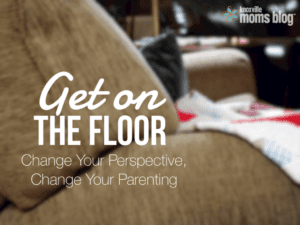My son loves photography. My mom has a fancy DSLR camera she occasionally lets him cart around his neck on a strap (supervised, of course!), and he always comes away with a bunch of blurry shots of random things around the room: the back of a chair, the corner joist of the porch railing, a lamp shade. Whenever he gets a hold of my iPhone, I usually find 50-100 rapid fire shots of whatever TV show he was watching, horribly unflattering shots of me dozing off on the couch, his dirty shoes piled up in the corner by the door. I guess it’s arguable whether he actually enjoys “photography,” per se, or just that he derives sensory pleasure from the little clicking sound the device makes whenever he snaps a photo of whatever the camera happened to be pointing at.
But I like to think there’s more. These seemingly random pictures my son regularly captures don’t just show the mere directionality of the camera he happened to be holding. Whether or not the subject matter is intentional, these pictures tell me something about my son:
His perspective.
To me, the pictures my son takes are weird, random, and poorly executed. The subject matter is uninteresting, the lighting is terrible, and the shot is out of focus. It would be easy for me to call them “bad” pictures, but is that really true? As an adult, it’s easy to look at the world around us as the grand, all-knowing beneficiaries of the wisdom that comes from age. Certainly it is our responsibility to help our children navigate life from our lens of experience, but what have we lost as we have “grown up,” both figuratively and literally?
Sometimes, to help kids understand and grow from their own experience, we need a little change of perspective.
I used to get so frustrated that my baby would cry whenever I vacuumed. He was fine if I was holding him, but set him down for a second and he would be screaming. What difference should it make if he is in my arms or in the chair? The vacuum is still the vacuum. Then one day it hit me that the vacuum is nearly a foot taller than him, and when I’m pushing it away from myself, it appears to be going toward him. It was then I realized that what makes the vacuum less scary isn’t me, it’s the perspective of being taller and pushing it away that help him feel secure. However, I didn’t figure this out until I was laying on the ground when the vacuum was nearby. Sometimes it requires actual physical repositioning in order to gain empathy for our children.
In other words, get on the floor.
Have you ever noticed the one consistent characteristic of every picture your child ever takes? They’re all lower to the ground. There’s something funny and a bit bewildering about seeing the underside of your kitchen table, but when you realize that’s the view your toddler has every day, it takes on new meaning. This is his world, and he is experiencing it for himself, not just an extension of my own experiences. It seems so simple, and my apologies to those truly enlightened mothers for whom this revelation comes naturally, but some of us can get so caught up in our own mothering that we forget about our children’s individual personhood. Getting a glimpse of their perspective allows us to get a little window into their minds and experiences, which in turn helps us better respond to their needs and wants.
From the floor I can see that the bookcase really does look like a rock climbing wall (be sure to anchor yours!), the stove appears the same whether it is off or on, and the shadows on the wall at night do seem to take over the room. I can see that some of the little things that frustrate me about my children are actually legitimate issues from their point of view, and I would do well to try listening more than demanding blind trust and compliance.
The other night I caught myself yelling at my nearly-9-year-old daughter for disobeying a rule that has been reiterated multiple times. A few minutes later I found her in another room, sobbing that she just doesn’t understand that rule and why it is so hard for her to obey. Suddenly I flashed back to my own childhood, just coming into the beginnings of puberty, flooded with hormones and emotions I didn’t know how to identify or control. It is scary to feel out of control of your situation but even more so to feel out of control of yourself. This shift of mine may not have been visual, but I still had to get on the floor… to wrap her tightly in my arms. When I changed my perspective to how she must feel, suddenly I didn’t care about the rule; the only thing that mattered was showing compassion to my little girl, on the cusp of the most difficult phase of her life, and reassuring her that Mommy will always listen and respond with love.
No matter if your children are toddlers or teenagers, don’t forget to get on the floor with them as often as possible. You may find that there is real breakthrough when you change your position and your posture from standing and looking down at your children to sitting on the ground face to face with them. Playing cars, watching clouds, wrestling, painting nails, being a tickle monster, or just getting on their level for a much-needed hug, we will find that shifting our perspective to theirs and spending time in their world will make us better, more attentive parents, and it will ensure they feel a whole lotta love right where they are: on the floor.





















Good!
Thanks!
Love it!
Thank you!